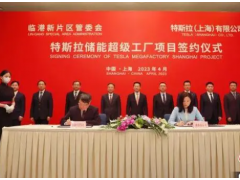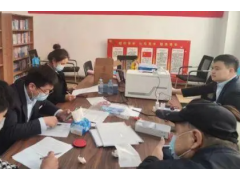Yonhap News Agency recently reported that at the 17th South Korea-China Economic Ministers Video Conference, China and South Korea reached an agreement for the first time on deepening supply chain cooperation, and agreed to expand carbon neutral policy exchanges and promote economic cooperation. According to the report, the representatives of the two countries commemorated the 30th anniversary of the establishment of diplomatic relations between South Korea and China, and spoke highly of the achievements of economic exchanges between the two countries.
South Korea's "Central Daily" website reported that in the past 30 years, China and South Korea have established a mutually beneficial relationship. The two countries have achieved brilliant results in personnel exchanges and economic and trade cooperation. In the process of China's development into an economic power, technology, investment and development experience from South Korea have played a role, and South Korea's sustainable development and eventually entering the threshold of developed countries cannot do without the Chinese market.
Japan's "Asahi Shimbun" reported that since the establishment of diplomatic relations between China and South Korea 30 years ago, the scale of trade between the two countries has continued to expand. The report pointed out that South Korea has carried out concentrated investment in places such as Shandong Province, which is geographically close to China. Korean companies in the fields of electrical appliances and automobiles are actively entering the Chinese market, and South Korean semiconductors are mainly exported to China.
According to data released by the General Administration of Customs of China, in 2021, the bilateral trade volume between China and South Korea will exceed 360 billion US dollars, which is 72 times that of the year when diplomatic relations were established in 1992. China has been South Korea's largest trading partner for 18 consecutive years. According to South Korea's statistics, direct and indirect mutual investment between South Korea and China has reached 250 billion U.S. dollars; South Korea's exports to China will account for more than a quarter of South Korea's total exports in 2021.
The fruitful results of China-ROK economic and trade cooperation fully demonstrate that the two countries are not only permanent close neighbors that cannot be moved away, but also inseparable cooperative partners. From the perspective of economic complementarity, over the years, China's huge market, cheap labor force and preferential tax policies have been effectively combined with South Korea's advantages in capital and technology, providing impetus for the rapid increase in Sino-Korean trade volume. In terms of institutional dividends, China and South Korea signed a bilateral free trade agreement (FTA) in 2015, and have reduced tariffs eight times so far. China has implemented zero-tariff tariffs on more than 40% of imported goods originating in South Korea. The China-South Korea Free Trade Agreement is a milestone in the history of the development of economic and trade relations between the two countries. It not only stimulated the significant growth of bilateral trade and investment, promoted the employment and economic revitalization of the two countries, but also played a positive role in further strengthening the economic and trade relations between the two countries and even bilateral relations in various fields. .
On January 1 this year, the Regional Comprehensive Economic Partnership Agreement (RCEP) came into effect. Compared with bilateral free trade agreements, RCEP has made new norms in areas such as the regional accumulation principle of origin, intellectual property rights, and e-commerce, and institutional opening has reached a new level, promoting the formation of a closer industrial chain, supply chain, and value chain in Asia. chain. As members of RCEP, China and South Korea have a broader space for cooperation in the economic and trade field. In the first half of this year, against the backdrop of repeated delays in the COVID-19 pandemic, continued geopolitical conflicts, and the fragile recovery of the global economy, the bilateral trade volume between China and South Korea rose against the trend, reaching US$184.25 billion, a year-on-year increase of 9.4%, showing resilience and potential.
It is noteworthy that in May, June and July this year, South Korea's trade deficit with China has been in deficit for three consecutive months. In the past 30 years, South Korea has maintained a monthly trade surplus with China. This reflects some new changes in China-ROK economic and trade relations. In the past, a typical feature of the division of labor between China and South Korea was that South Korea exported intermediate products such as parts and components to China, and China then processed them into finished products and sold them to overseas markets. Today, with the improvement of China's manufacturing industry and the adjustment and upgrading of industrial structure, China has higher requirements for Korean products exported to China. High value-added and high-tech products from South Korea are more favored by the Chinese market. In the trade between China and South Korea, cooperation in the field of high-tech has increased relatively, while processing trade has decreased. Under such circumstances, there are also many voices in South Korea, suggesting that the government take necessary measures to discover high value-added export products and strengthen export competitiveness to China.
Recently, according to the relevant provisions of the China-South Korea Free Trade Agreement, the two countries have launched the second phase of negotiations on the free trade agreement, and carried out high-level service trade and investment liberalization consultations in the negative list mode. The South Korean side also revealed recently that South Korea and China have agreed to set up a new high-level consultation body to strengthen cooperation and communication in the supply chain. These new trends have released positive signals and also demonstrated a new atmosphere in the economic and trade cooperation between the two countries. On the one hand, most of the 2015 China-Korea Free Trade Agreement focused on trade in goods and commodity circulation. The second phase of negotiations paid more attention to issues such as service trade and investment liberalization, and the level of bilateral openness and cooperation was higher. On the other hand, at a time when regional and global industrial and supply chains are relatively fragile, China and South Korea have focused on supply chain security issues to carry out consultations and cooperation, which benefits both sides and is also a counterattack to the so-called "decoupling" and "broken chain" words and deeds.
At present, the world is entering a new period of turmoil and change, economic globalization is facing headwinds, global governance is in trouble, and individual countries have established closed and exclusive economic and trade "small circles" in the Asia-Pacific region, which has a negative impact on the overall situation of Asia-Pacific economic and trade cooperation. But no matter how the situation changes, the fundamentals of the complementarity and mutual benefit of the economic and trade relations between China and South Korea have never changed. China-ROK economic and trade cooperation has a solid historical foundation and a strong endogenous driving force. It has formed a relatively stable system and mechanism, and it also has the resilience to withstand the impact of external risks. There are reasons to believe that China-ROK economic and trade cooperation has broad prospects and a promising future.




